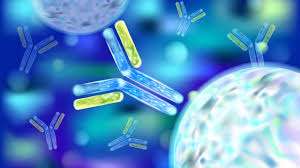The US FDA has lineated a distinct drug development pathway for biologics. This pre-market pathway is different compared to products termed only drugs. Although biologics should comply with BLA applications, the sponsor should also submit NDA data demonstrating the safety and efficacy of the biologics. Today sponsors have numerous bioanalytical testing methods, such as LC-MS and MSD analysis. Besides, these methods have multiple testing options, such as MSD cytokine and antibody immunogenicity assays. However, the success of biologics drug development heavily depends on laboratories compliant with good laboratory practices. Hence the current article explores the challenges and solutions for good laboratory practices-complaint laboratories in the era of biologics.
Challenges and Solutions During Preclinical tTsting
Similar to a pharmaceutical drug, biologics also undergo preclinical and animal testing to identify its pharmacology and toxicological effects. Although the experimental framework of preclinical biologics testing is similar to other drug development regulations, biological drug products have inherent issues requiring a flexible and science-based approach toward nonclinical studies.
Due to species and tissue-specific or biological activity, researchers cannot assess several biologic drugs in common animal species, such as dogs and rats. Instead, researchers use multiple tests, such as functional and in vitro assays, to identify relevant species.
Also Read: Things to Consider When Choosing the Best Orbeez Guns
Immunogenicity is a crucial aspect of biological products. Many biologics may illicit unwanted human responses that can be potentially harmful, for example, ADA complex formation and neutralizing drug activity. Therefore, researchers should use antibody testing samples during repeated-dose toxicity testing. Besides, data interpretation of ADA formation should include PK/PD and adverse events.
Challenges and Solutions During Clinical Testing of Biologics
The US FDA investigates IND applications before permitting human studies. Generally, the IND application contains adequate preclinical data demonstrating efficacy and safety in animal studies. Besides, this application also includes pharmacological effects, drug mechanisms, and ADME characteristics.
Similarly, to a novel pharmaceutical drug, the biological product also involves three phases of clinical studies. However, biological drugs have unique clinical concentrations. Biologics require immunogenicity testing, which is generally not much of an issue for small-molecule drugs. Moreover, biologics are developed for serious and life-threatening conditions; hence, the patient population is already immunocompromised.
During phase I clinical trials, the biologic is tested in few human subjects to assess pharmacology, metabolism, and safety at escalating drug doses. However, unlike nonbiologic drugs, biologics are generally tested in patients in phase I studies. The ultimate objective of phase I biologic studies is to identify the bioactivity, the maximum tolerated dose, and the optimum drug dose.
Phase II clinical trials are controlled experiments to evaluate short-term adverse events and deficiencies in several hundred patients. Experiments assess the PK/PD parameters, exposure-response relationship, and biology of drug immunogenicity.
Data from phase II clinical trials are used to refine the protocol for the final phase of clinical trials. Phase III clinical studies are more extensive than phase II trials and assess the risk/benefit association and evaluate primary labeling claims.
In conclusion, compliance with the regulations of good practices laboratory will remain crucial for the success of biologic drug development.


